26 Heineken
Introduction
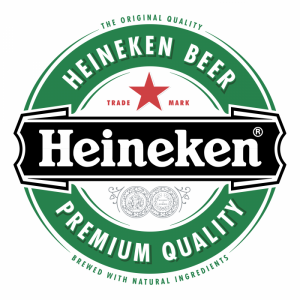
Heineken lager beer, or known as just Heineken, is one of the pale beers with 5% alcohol. It is produced by the Dutch brewing company’s Heineken N.K. Heineken is sold in a green bottle with a red star on it. In 1954, the brewery introduced the oval logo with Heineken written in the middle. Freddy Heineken wanted to be creative and wanted to make the words rounded. In the 1930s the symbol became associated with communism after the second world war. The brewery swapped it to the white star before putting it back to the original after the fall of the Soviet Union in 1991. Heineken uses three main ingredients such as barley, hops and water. Once the yeast is added they refer to it as a magical transformation.
Where it Originated From
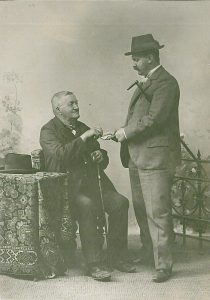
Heineken was introduced in 1873 in the Netherlands. On February 10 1864, Gerard Adriaan Heineken bought the haystack brewery in Amsterdam. In 1873 after hiring Dr. Elion developed a Heineken yeast and was established; the first Heineken beer was brewed. In 1875 Heineken won an award called “Medaille D’Or” at the International Maritime Exposition in Paris. This is when Heineken sales topped 1.7 million gallons, making it the biggest beer exporter in France. Heineken is brewed in the United Kingdom, Ireland, India, Serbia, Australia, New Zealand, Costa Rica, and Saint Lucia.
Global
Heineken made its first label in 1864 to be put onto the market. Heineken made its first step to South America in 1883. In 1914, it expanded its production to other continents and entered into Asians markets in 1929. A year before 1929 it began to target international audiences. 2003 was the first international acquisition of Austria-based Brau-Beteiligungs. In today’s world it is offered in more than 200 countries.
Sponsorships
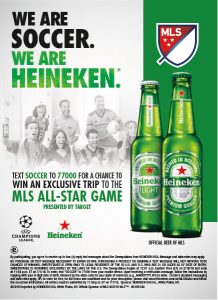
In the sports leagues such as rugby and soccer Heineken is a big part with sponsors. During the UEFA Champions league and Rugby World Cup. There is major sponsorship in the Rugby Union that began with the Welsh Premier Division competition. Heineken sold over 1 million pints at an MLS back in 2014. Back in 1997 Heineken was produced in 7 of the James Bond movies. Heineken was one of the biggest brand’s globally in the marketing platform in 2015. In 2016, Heineken was the official beer for the FIA Formula One World Championships and starting from the Canadian Grand Prix. Also in August 2021, all women single seat racing signed a multi-year deal with Heineken.
Heineken 0.0
Heineken 0.0 is a non-alcoholic beverage that still tastes like beer. It was launched in 2019 as part of a U.S campaign. The campaign called it “Now You Can” to help advertise health-conscious consumers. An ad in the New York City newspaper said “Beer after hot yoga? #NowYouCan”.
 Brewing Science and Industrialization:
Brewing Science and Industrialization: 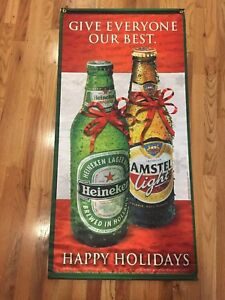
Heineken beer is made in the following footsteps of malted barley, hops and water and combined with yeast to unleash magic. Also, wheat and rice used to be contained in this type of beer. Heineken beer was founded in Amsterdam, Netherlands, February 15th, 1864. Heineken beer brews all around the world in more than 70 countries. A global range also includes more than 300 international, local, regional and craft beers. A few types of other companies that work with Heineken are Dutch’s Star, Jamaica’s Red Stripe, Spain’s Cruzcampo, and Holland’s Affligem Blonde. In 2021 America was granted the highest percentage with 37% average between the other countries. These other countries have a percentage with Europe at 34%, AMEE at 17% and Asia pacific at 13%.
Beer Style:
Heineken is a lager style of beer so it is heavier than other types. It has more of a stronger taste to it. Heineken is a 5% ABV beer made without any additives. The yeast and barley make the beer thicker to have a great taste when you drink it. When the yeast and barley are mixed it keeps the preservatives in it to last and make you want to have more. People started to suggest to Heineken to make a lighter sort of beer and in 2005 they did. In 2005 America was introduced to Heineken light. It contains fewer calories and carbs and only has 3.2% of alcohol. Also, in 2019 Heineken came out with a beer with 0% alcohol. It tastes just like a beer with zero alcohol in it. There are only 69 calories in it. The difference is that removing the alcohol you still get the same beer with malty and fruit flavors.
 The WW1 and WW11 ERA:
The WW1 and WW11 ERA:
Beer was a big part in the war. People drank booze all the time. In battle, on the side, in the hospital. Whenever someone got a chance they would have beer. Brewers were delighted to have a life and used the opportunity to promote their beers in the war. Heineken was a small part in the war as it started later in the years. Beer company’s said it was nutritional due to the vitamin B in the yeast.
Multimedia: 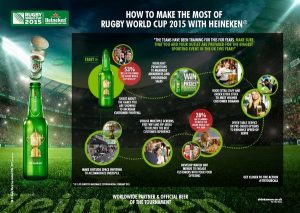
In multimedia Heineken was a part of sports leagues such as rugby and soccer is a big part with sponsors. During the UEFA Champions league and Rugby World Cup. There is major sponsorship in the Rugby Union that began with the Welsh Premier Division competition. Heineken sold over 1 million pints at an MLS back in 2014. Back in 1997 Heineken was produced in 7 of the James Bond movies. Heineken was one of the biggest brand’s globally in the marketing platform in 2015. In 2016, Heineken was the official beer for the FIA Formula One World Championships and starting from the Canadian Grand Prix. Also in August 2021, all women single seat racing signed a multi-year deal with Heineken.
Commercial for Heineken beer for the Rugby World cup:
http://https://youtu.be/yFYHqHQ1BFI
Reference’s:
What Is Heineken Beer? (History, Ingredients & Style) (renegadebrewing.com)
Beer and brewing | The HEINEKEN Company
References
10 Things You Should Know About Heineken | VinePair

